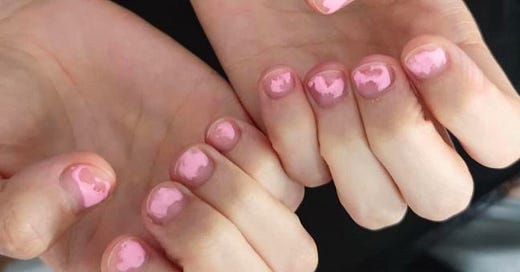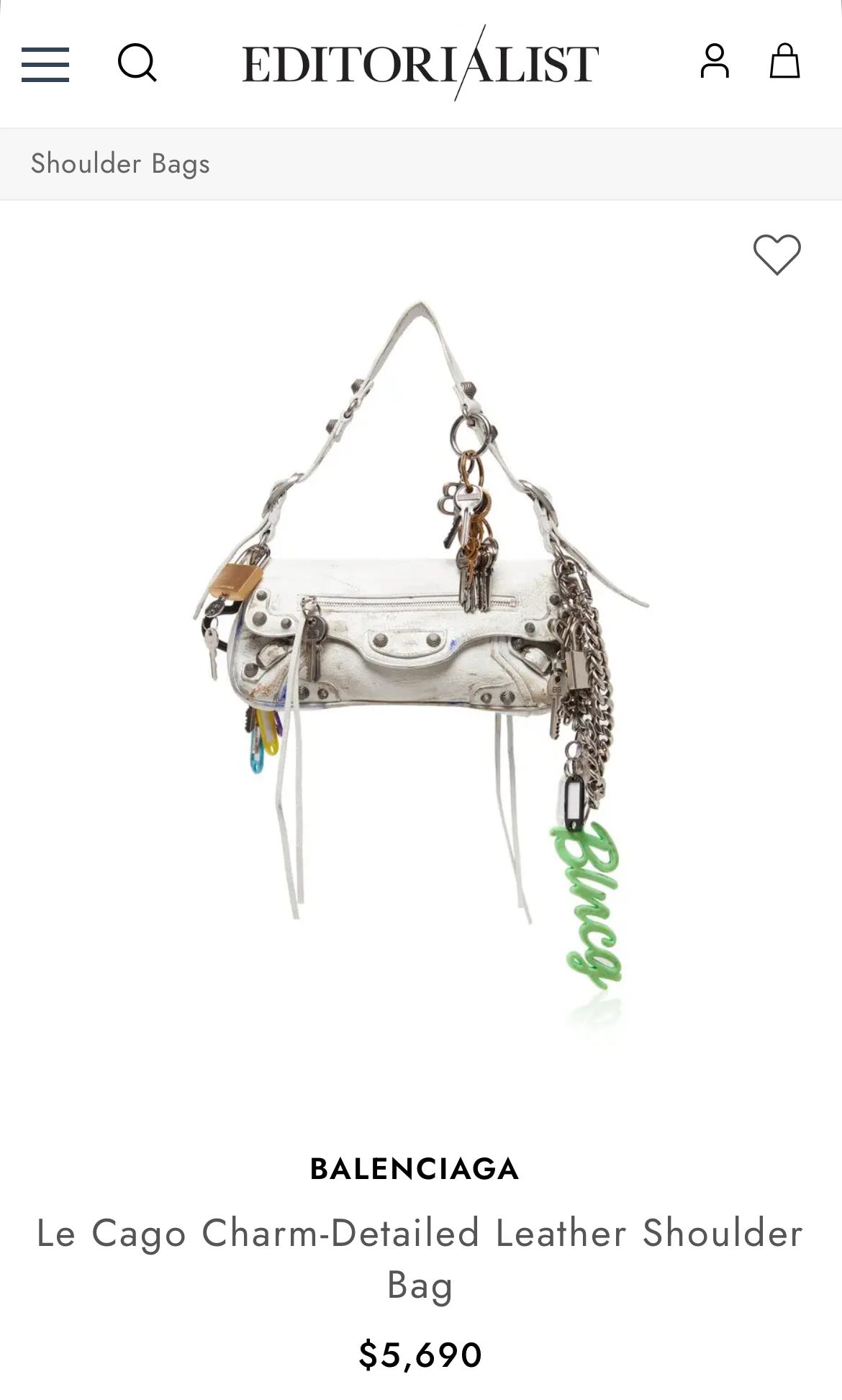The Art of Being a Mess
Searching for signs of life in the clothes, nails, and trinkets that personify the everyday
Messiness has been a building block of social media. Where would we be without smudged makeup selfies and cigarette butts? From parties in the 2000s documented on Flickr to our rooms posted on Tumblr in the early 2010s. We’ve built social media on pictures of messy beds, buns, and bathroom sinks. Even page markers exploding from our toppling piles of books warranted documentation. How else could we romanticize our day-to-day lives?
Now, in 2024, people buy pre-smudged designer sneakers and pre-decorated bags with the same clunky charms. We crave to show our individualism in the outside world to let everyone know which algorithm we’re on. And now, a revival of Indie Sleaze, originally known as Hipster culture, has slowly been creeping into the mainstream. Its alternative ethos fed the party scene of the late 2000s, was documented by digital cameras, and died with MacBook selfies. We’ve now brought back digital cameras at the clubs because we want to be photographed falling on the floor in a sleazy way the iPhone can’t capture.
As much as we all want to be nonchalant about our messes, we can’t help curate them for our audience. On TikTok, girls post “what’s in my bag” videos and pull out every crumpled receipt, loose coin, and cigarette pack they can find. Our obsession with documenting our messes starts with the obsession of documenting our lives. Instead of hiding behind the facade of the clean lives we show on our feeds, we’re now letting the chaos come through.
On the runway of Miu Miu’s Spring/Summer 2025 collection, models strutted down the runway in typical Prada’s little sister-wear: sweaters tied up so they can be worn as tube tops and “chipped” nail polish (here Mei Kawajiri swipes nail polish remover on freshly painted nails to create a chipped effect). I thought it to be so accurate and true to my life but also so eerily curated. Per the show notes, Miu Miu is exploring the role of women in media to “investigate the experience of vanity, to analyze how women see themselves, through their own gaze”. Miuccia shows us how chaotic fashion can be used to personify the mundane.
Seeming effortless and easy, a messy style can draw anyone in. Though like anything that becomes commodified, it has quickly strayed from its roots. This week, Amy Francombe wrote a brilliant article for Vogue Business on ‘chaotic customization’ and how Gen Z’s obsession with bag charms quickly erases all the life that goes into collecting. The long-standing DIY trend of adorning your bags with patches and charms collected over time is being adopted by fast fashion brands that offer cluster-ready charms. A $95 bag covered in pins and charms called the “Pinterest Purse” has made the rounds on TikTok Shop as a quick ready-to-clutter option for those dying to jump on the trend. It’s the perfect solution for those with no personal style looking to purchase a sense of self.
Avery-Claire Nugent, the face behind @girlswhocluster, is one of many who’s made a personal brand out of being a curated mess. She’s popular on TikTok for curating lists and gift guides of must-have trinkets she calls cluster items: lighters, Hello Kitty Pez dispensers, perfume samples, nail polish, bobby pins, and anything else you might leave lying around on your table. All purchased for the sake of the aesthetic.
As ironic as it is, Avery-Claire doesn’t hide how much time and shopping goes into curating her clustered lifestyle. At the beginning of a “clustering 101” video, she sets a disclaimer: “The best trinket tray clusters are the ones that take a little bit of time”. She then admits she’s too impatient to let her clusters develop naturally and proceeds to show some essentials people need to start their cluster journey. In essence, clustering is all about personifying the day-to-day even if it means fast-forwarding through the life that naturally creates it.
Though the art of being a mess is inherently eclectic, it’s easy to look past those who so obviously use overconsumption as an aesthetic. True leaders of the masses are those everyone idolizes.
Being a mess was essential to the success of Charli XCX’s Brat. To see someone flaunt their partying habits and messy relationships was the antithesis of the clean trad girl that’s been filling our feeds. “Bad tattoos on leather tan skin” is a line that was repeated throughout the summer. We want to accept that life is short and that faded tattoos on wrinkled skin are a better marker of a life well lived compared to bloated botoxed faces. I’ve seen the romanticization of it all over my Twitter feed. Vegans are now meat eaters and vapes have been switched out for the real thing. Like everything that cycles back, so do our desires to give into our dying world. But is it really the mess we crave or the presence of life?
On the other side of those who curate purposeful messes are those who live for the history found in inanimate objects. The subreddit r/wellworn is one of my favourite places on the internet. It’s filled with pictures of items run down from use. From wooden staircases to elevator buttons and creased shoes, every object that’s stood through the test of time is there.
To me, that’s more romantic than buying a pre-stained sneaker. Using objects to their maximum capacity is how they were meant to be used. Though I’m part of a generation that’s taken consumerism to the next level with Shein and Amazon purchases, I’m also part of the generation that treats thrifting and second-hand shopping like a job. Buying old clothes is a high-brow hobby. We want to be unique while we show that our personal style is a result of time and patience. Spending hours online finding a vintage piece from your favourite designer takes skill and knowledge. Real fashion heads might even tell you to spend a year researching a specific piece before you commit to purchasing it. Curation is meant to be slow.
The need to look messy and lived-in is understandable. It’s like the awkwardness of moving into a new apartment. We wait to invite friends over because don’t want to be associated with naked spaces just as we cringe at what we wore in high school. People who don’t know how to decorate themselves yearn to be told what accessories to buy. Yet, the thing with buying ready-made messes is that it leaves no room for them to create their own.








